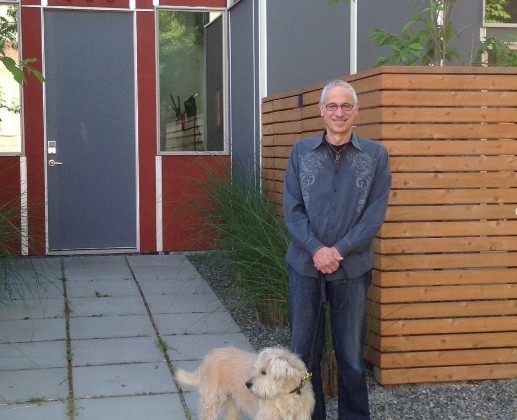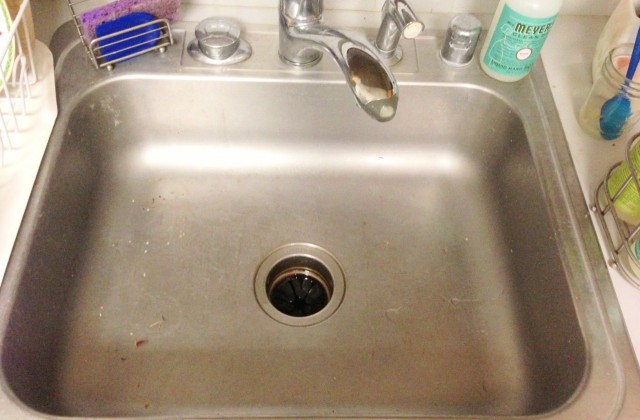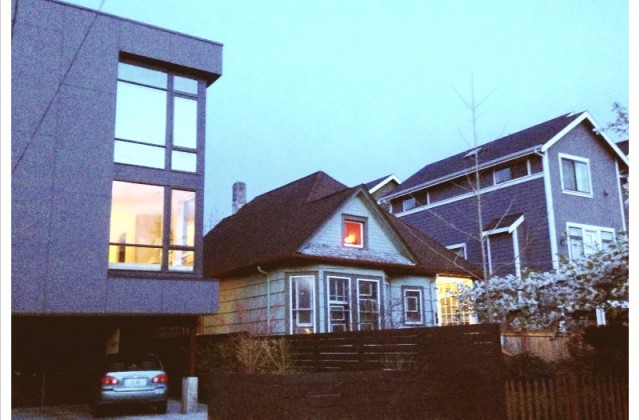Microhousing Group Responds to Questions Raised by City Council
A few weeks ago, Seattle City Councilmembers Tom Rasmussen, Sally Clark, and Nick Licata issued a memo to the Department of Planning and Development asking them to draft legislation and to find answers to a number of questions about microhousing.
Here is that memo:
Council Microhousing Memo Final052413
Smart Growth Seattle has convened a group of leaders in the microhousing field — builders, operators, and allies of microhousing — to respond to the many concerns and questions being raised by the City Council and opponents of microhousing. Here is the Microhousing Group’s initial response to the Council’s memo.
Smart Growth Seattle Microhousing Response
The Kitchen Sink: Smart Growth Seattle Debates Microhousing
The microhousing debate is a good one for the city of Seattle. Will we welcome growth or shun it? Will we be open to innovation or look for a way to slow it down. Last Tuesday I took the stage with opponents and skeptics of microhousing. What do you think? Who made the best points? What is the best message for supporters of more housing choice in Seattle? How do we preserve microhousing as an option for people looking for housing in Seattle?
This is Where I Live: What’s Not to Love?
This is the latest in a series of guest posts by people who live in small-lot homes or microhousing telling their own stories about where they live.
You live in a home that some people say shouldn’t have been built. How do you feel about people that don’t like your house and where you live? What would you say to them if they said it was too small or too big or ugly?
Within six months of possession, our fence had been spray painted twice with graffiti. The first tag was, “Gentrification Kills” and the other was, “F#%@ Gentrification’. Both graffiti’s were removed. If I were to confront the taggers I would have simply explained that our home is a Five-Star Green Home and is the most energy efficient home in the neighborhood. It is only 2,400 square feet, while many surrounding homes are 4,000+ square foot turn-of-the-century homes.
Many people have driven or walk by and commented that they loved the way our home looked and often asked the contractors name. I’ve worked in the yard & neighbors would simply exclaim, ‘beautiful home’. Since the initial tagging, we have had only received positive feedback.
How do you feel about where you live now? Does it work? How does it compare to alternatives you had? Why is having this house in Seattle important to your family?
We specifically wanted a home in close proximity to Downtown Seattle; a few minute drive or a bus ride to all that downtown has to offer was important. This is my first home that is located close to the downtown area of a major city; only 14-blocks and within a block of Swedish Medical Center; one of the finest medical centers in the country. Although, the home is on a small piece of property, it perfectly matches our lifestyle. A large deck, located off the main living space, is perfect for relaxing in the sun or barbecuing with family & friends. The neighborhood is great for walking our dog, Willie, and our route now includes stopping in one of three conveniently located dog-friendly coffee shops.
Tell us about you and your family. Whatever you feel comfortable sharing about work, family life, where you’re from. It would be good to get a paragraph about who you are.
In the 90’s, I traveled on business for several years and fell in love with the Pacific Northwest; its people and, especially, its climate. After retirement and becoming single again, I met, Kim, a wonderful woman who had lived in Seattle in the 80’s and always felt a special kinship to the region. She was born and raised in the San Francisco Bay Area but had lived in New York City, Durham, NC, Kauai, Napa and San Francisco.
When, in 2009, I suggested that we relocate to Seattle from San Francisco, Kim was 100% supportive and within a few minutes, she searched Seattle home listings via the internet & found a recently completed Dwell Development home; she contacted, Susan Stasik of Windermere, and learned that home was just sold. We subsequently established a dialogue with Anthony Maschmedt of Dwell Development and within a few months, we met and contracted with Anthony to design & build a semi-custom home on a piece of property that Dwell had already purchased.
We worked closely with Anthony and his architect, Julian Weber, to design a home whose main living space and master bedroom wing were located on the second floor with southern exposure to maximize the light. That, along with it’s radiant heating, additional insulation, triple pane windows & other green home features makes this home the most comfortable home I have ever owned.
Anthony was willing to design a home that had the ‘look & feel’ of a Dwell home, which initially drew us to him, plus many of our requested features to make this our dream home. It includes a self-enclosed studio on the first floor that has a full kitchen, a large ADA bathroom and a separate entrance. The studio is currently set up to house a home-based business and is available as a short-term rental & guest room for family visits.
I have recently joined a small, boutique restaurant, Thrive, located in north Seattle. Thrive offers freshly made smoothies, juices and gluten-free, dairy-free, organic, vegan entrees to nearly 200 customers each day who have embraced a healthy lifestyle. My wife, Kim, is a certified holistic health coach along with managing our B&B activities. She manages her businesses from our home studio. So, our home, business, lifestyle & outside activities synergistically support our goal of living a healthy & comfortable life in Seattle.
The Future: Should we allow more housing like yours in Seattle? Why?
We own a home that is:
- Contemporary and stunning
- Certified as a 5-star green home
- Comfortable in both winter & summer
- Demonstrated a 60% decrease in energy cost per square foot
- Used modern fabrication techniques for affordability
- Constructed on a small footprint
- Includes three courtyards
- Includes a large sunny deck
- Close proximity to downtown Seattle
What’s not to love?
Microhousing Debate: Social Engineering Becomes Social Plumbing
Smart Growth Seattle has taken on the microhousing issue that has been captivating the attention of the press and City Council lately. There was a panel debate that happened last week and tomorrow I’ll be on a panel sponsored by Publicola. The action with that panel starts at 6:00 Tuesday at the JewelBox Theater at the Rendezvous in Belltown (2322 2nd Ave.), emceed by Q13 Fox political correspondent C.R. Douglas.
The discussion has taken a turn from general complaints from annoyed neighbors worried about the possible changes brought by more people moving into the neighborhood, to very specific questions from City Council.
These questions reflect many of the things opponents of microhousing have been pointing to as things they want imposed on microhousing. For example:
- Establishing a minimum square foot size for microhousing units projects and what, if any required minimum square foot size of shared/common areas per number of people expected to share the use of the shared/common space;
- Requiring sleeping rooms in microhousing projects to include private bathrooms;
- Revising the code to limit microhousing to one person per sleeping room; and
- Prohibiting or limiting microhousing only to L-3 zones
There’s more, including imposing design review requirements, review under the State Environmental Policy Act (SEPA), and requiring review of how microhousing impacts neighborhood growth targets. All of these things add process and that adds time and costs to microhousing projects, costs that can only be recovered by increasing rents.
We’ll be addressing the specifics of how all these additional additions to the already long and drawn out process of getting a building permit turns into higher rents for working people, including students and others who are trying to make ends meet.
But here’s the one that tops them all from a recent City Council memo to the Department of Planning and Development:
Bathroom components
It is our understanding that the private bathrooms attached to sleeping rooms in microhousing projects are often comprised of just a toilet and a shower. Has DPD considered requiring these bathrooms to include a sink as well, which would increase the number of sinks in each sleeping room to two? Please provide a summary of the Department’s rationale for either pursuing or not pursuing such a requirement.
Now I am in favor of social engineering, especially social engineering that leads to sustainable outcomes. But mandating the number of sinks in microhousing? That sounds like social engineering becoming social plumbing and social interior design. Do we really want to start micromanaging microhousing like this?
We aren’t doing this with other kinds of housing. Let’s look at this way; what if people living in microhousing rallied around the idea that single-family home homeowners have too many sinks. All those sinks contribute to over consumption of water, so single-family homes should be limited to two sinks: one in the kitchen and one in the bathroom.
That doesn’t make any sense does it? If a homeowner or even a renter wants two sinks or three sinks or more sinks they probably should be able to have them, provided they follow regulations and that they pay for them. Why do opponents want residents of microhousing to pay for extra sinks? Why do sinks matter so much to opponents to this kind of housing? If there were sinks everywhere, would microhousing opponents walk away in satisfied victory?
Probably not. The push for social plumbing and mandating more process and trying to manage how people in microhousing live is, at best, an effort to stall and kill microhousing projects. At worst, the social plumbing movement is really about telling other people how they should live, regardless of whether people in the microhousing market want one, two, or three sinks in their units.
More Evidence: Increased Housing Supply Leads to Lower Prices
The idea that increasing housing supply—building more housing units of all kinds—has a beneficial impact on housing price is still very controversial in Seattle. Intuitively, people know that when there is more of something for sale, the price of it naturally begins to fall. But there is stubborn view here that making more housing doesn’t have the same effect on housing price. But when developers make decisions about when, what, and where to build, the studies they use are based on an analysis of housing supply and demand, and how those factors affect price.
I’ve written elsewhere about academic studies that found reducing or holding supply constant in the face of increased demand definitely results in higher prices.
Still, there is no way to do a side-by-side controlled study of supply and demand on two comparable cities. One can’t take a city and impose limits on supply and hold demand constant while in an adjacent city turn up supply with the same level of demand over five years, then analyze the data. The world can’t always be a laboratory, nor does it need to be.
However, each and every day real estate decisions worth thousands and even millions of dollars are made based on forecasts about housing supply and demand. Where do developers turn when they try to figure out what to build? With lots of money at stake they aren’t likely to just wing it, and even if they wanted to gamble, risk adverse banks and investors wouldn’t let them.
Developers and real estate people use real estate data in studies done by agencies that analyze supply and demand. One firm, Kidder Matthews, just released a top-line analysis of the apartment market in Seattle. What does their forecast say about housing supply and demand?
Vacancy rates generally have an inverse relationship with changes in rent; as vacancy rates increase the rate of rent growth generally decreases. Over the past twelve months the average regional rent on a per square foot basis increased from $1.21 to $1.28/s.f./month (5.8% increase) in tandem with vacancy falling by 90 basis points.
The basic assumption advisors and decision makers in real estate share is that when it comes to housing (apartments in this case), excess supply—empty units—means lower price. It’s also what real, local, actual, retrospective data show.
What’s the future look like for Seattle and the region for apartments?
Rental rates have returned to historic highs and use of concessions is minimal in most markets. In response, new development has ramped up with an estimated 8,277 new units expected during 2013. Currently, there are more than 13,301 units under construction and a total of 21,989 targeting 2013 and 2014 delivery. Although vacancy has remained at very low levels for the past two years, accelerating future apartment deliveries should begin to put upward pressure on the market vacancy.
When price goes up the financial incentives to develop housing go up too. More people want the product, the price is higher, and new producers want to get a piece of that business. Vacancy rates drop, prices go up, more suppliers enter the market, competition ensues, prices fall, suppliers hold back, prices go up, repeat. That’s how the cycle works, at least for people who put real money into housing.
Market studies are used by developers, lenders, and investors as a map to decide what to build and where and when to build it. How housing supply and demand affects price is not an academic exercise for them—it’s their financial future. Real estate studies based on supply and demand are not dactylomancy; these studies are the most conservative time tested measure used by the real estate industry to invest and build.
As the economy in Seattle improves more jobs will be created, and with those jobs comes increased demand for housing. Development of more housing—of all kinds—will positively impact price. It will. Whether we should relax regulation, incentivize new development, and encourage a variety of housing types isn’t debatable anymore—it is a mandate, especially if Seattle intends to sustainably welcome growth and economic recovery.




